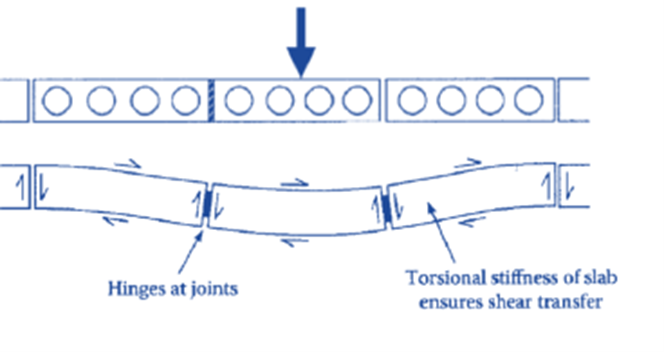IPHA has a proud history of involvement in research that has enhanced understanding and competitiveness of hollowcore as a flooring solution, with previous projects including HOLCOTORS (2002-2004, on shear and torsion) and HOLCOFIRE (2009-2014, on fire resistance).
Starting 2022 and running until the end of 2025, HOLCOLODIS investigates the load distribution between hollowcore slabs. A large series of experimental tests on hollowcore floors will be funded by IPHA as an industry-wide effort to get better insights in the load distribution phenomena, backed up with complementary FEM analyses.
Hollowcore Load Distribution
The research objective of HOLCOLODIS is to investigate the load distribution between adjacent slabs that are part of a floor system, and the influence of torsion in floor fields.
Current design approaches are most valid for equally loaded rectangular floor fields, but in practice, it is very common to see floor fields with large openings, complicated support conditions, or concentrated loads acting on individual slabs.
Calculating such slabs as individually supported simple elements can lead to increased reinforcement or even the use of deeper slabs. Hollowcore slabs are part of connected systems with shared loads. Use of Hollowcore Load Distribution – or HOLCOLODIS – is common practice, but it is often suboptimal.
Improving Understanding & Design
Annex C of EN1168 is dedicated to the calculation of load distribution factors based on graphs published first in FIP in 1988. The data and analysis behind these are no longer available, nor verifiable. Additionally, the graphs used are theoretical, and in practice floors largely differ from these theoretical examples.
Torsion occurs in many ways within hollowcore floors, and even more so in the case of those with complicated support, boundary, or load conditions, where it is necessary to take simultaneous torsional moments into account.
Many research items are worthy of mention, and a full proposal has been accepted by the IPHA Board, but broadly speaking, a better understanding of load distribution through the proposed research will lead to better design rules and competitiveness for hollowcore floor construction.
For more information, contact Wim Jansze, President of IPHA Technical Committee.
